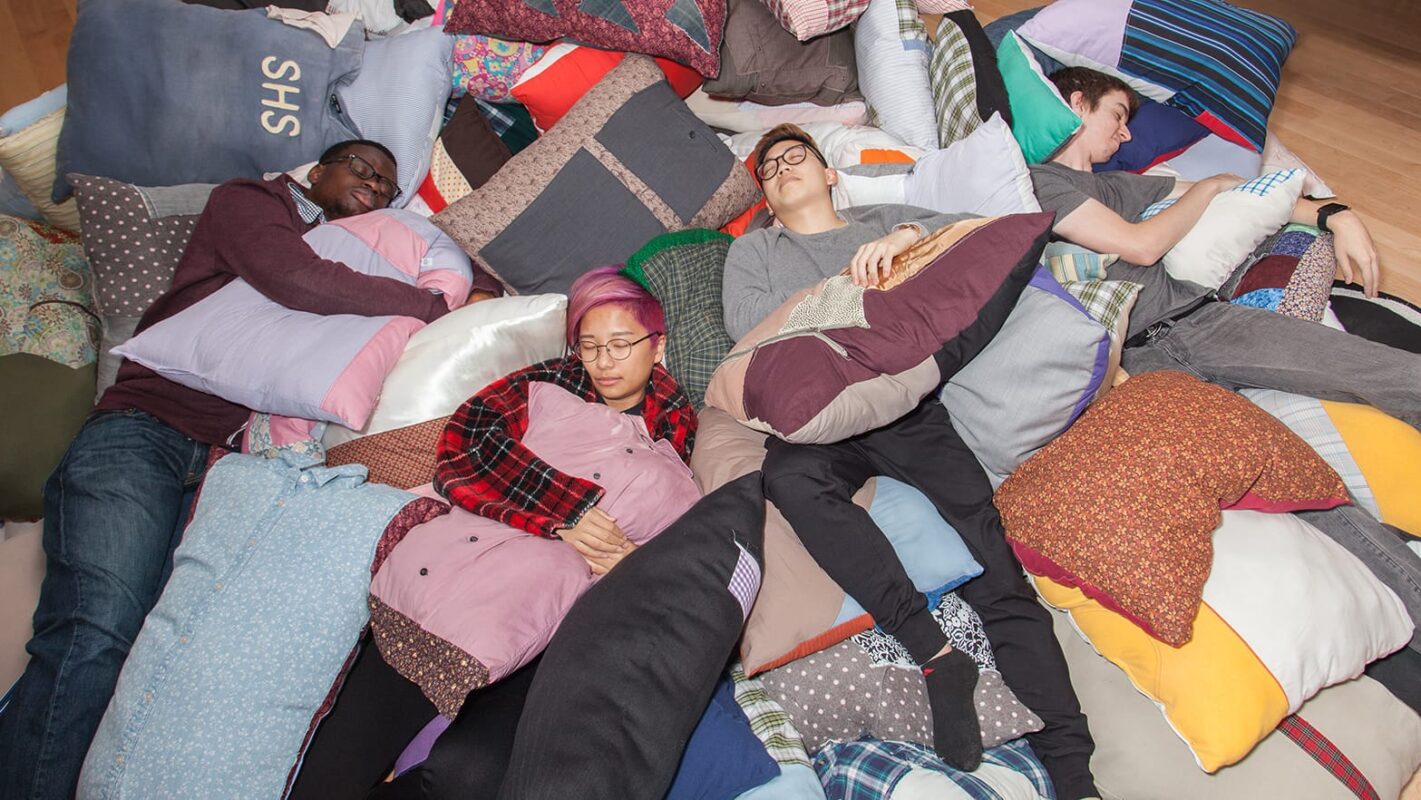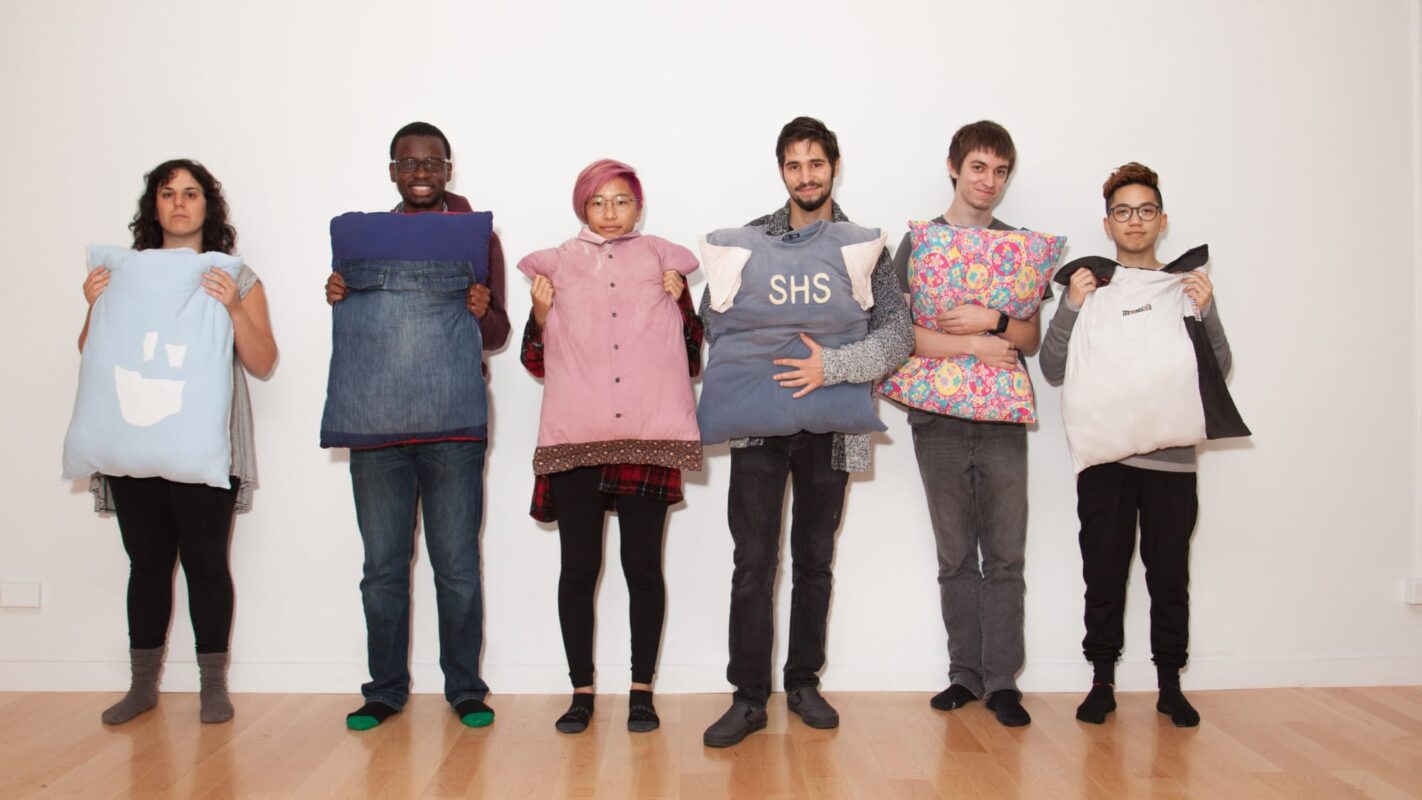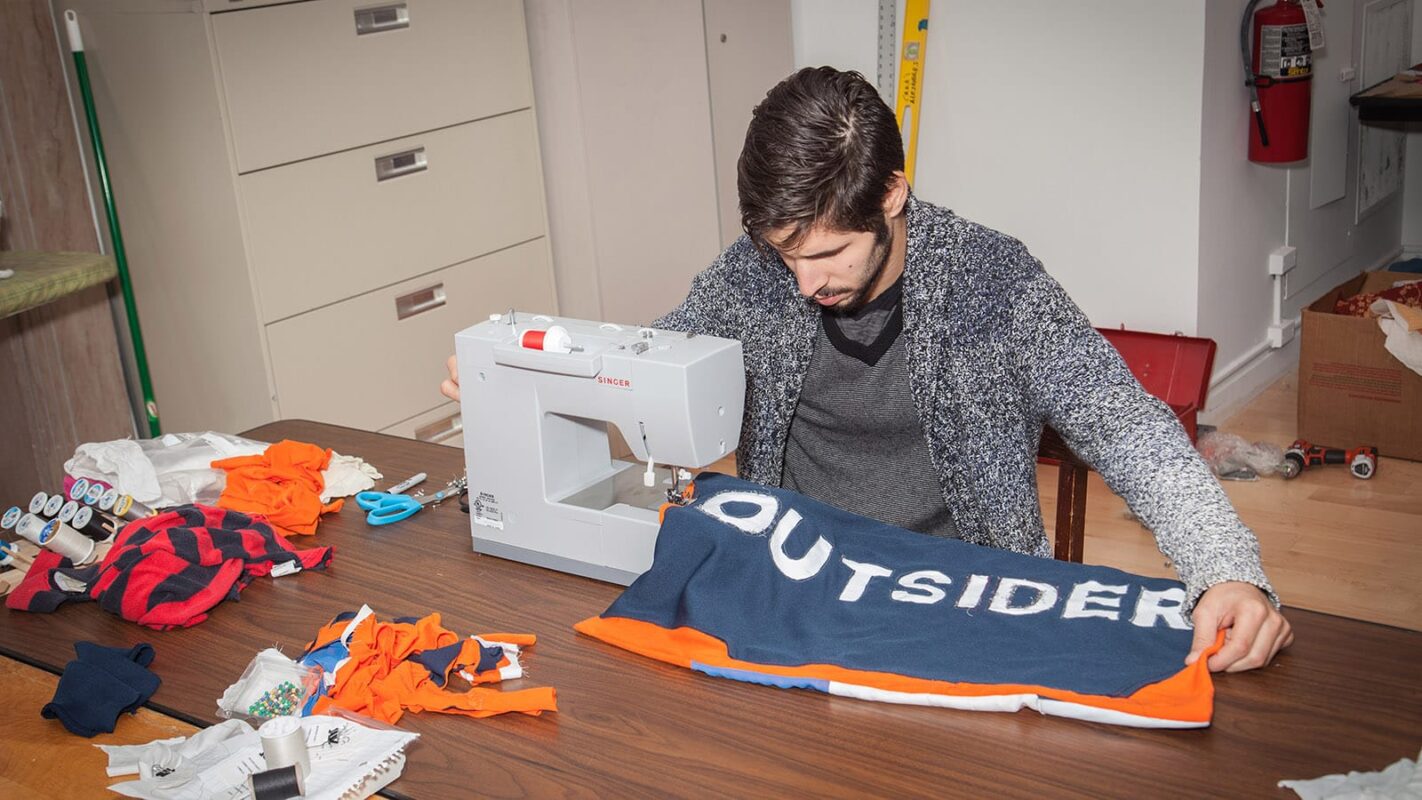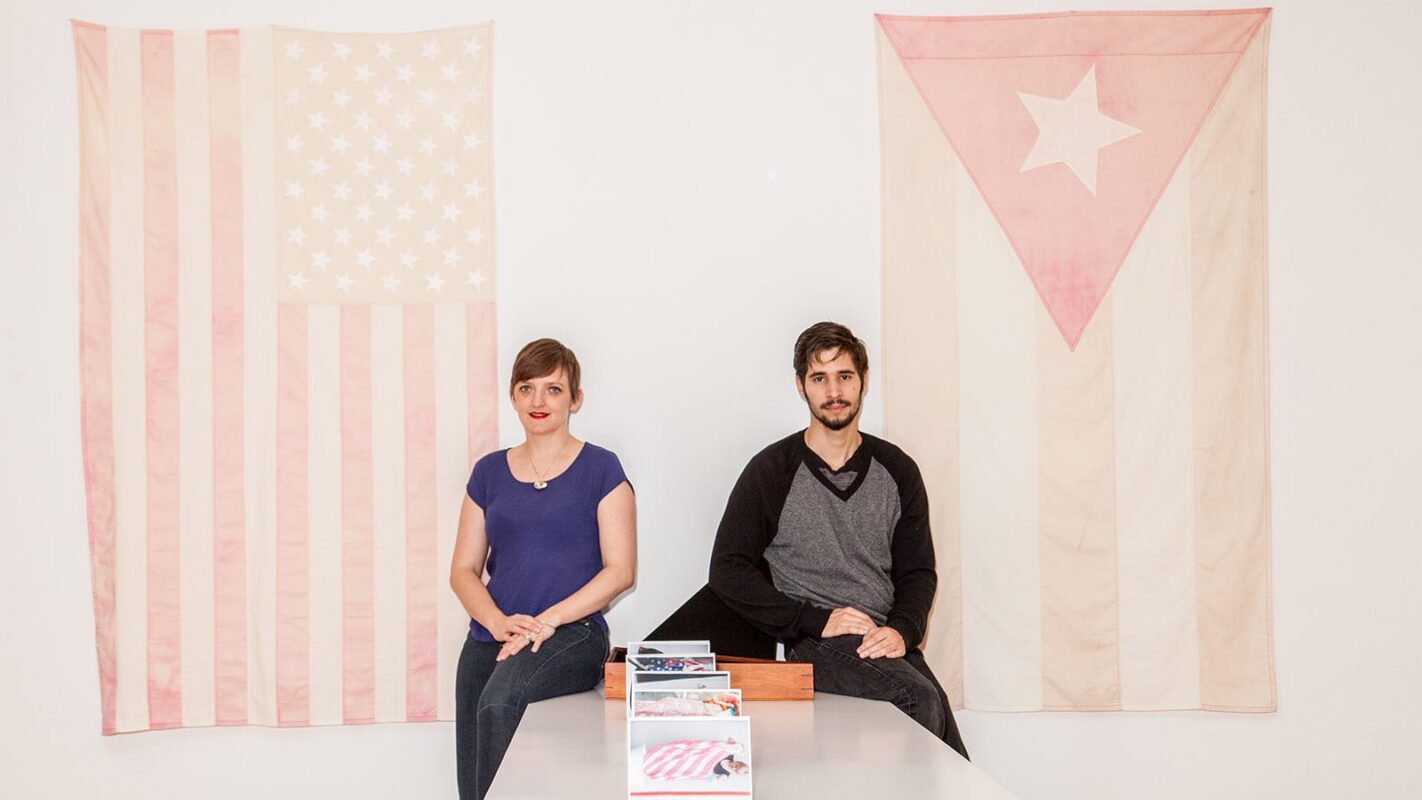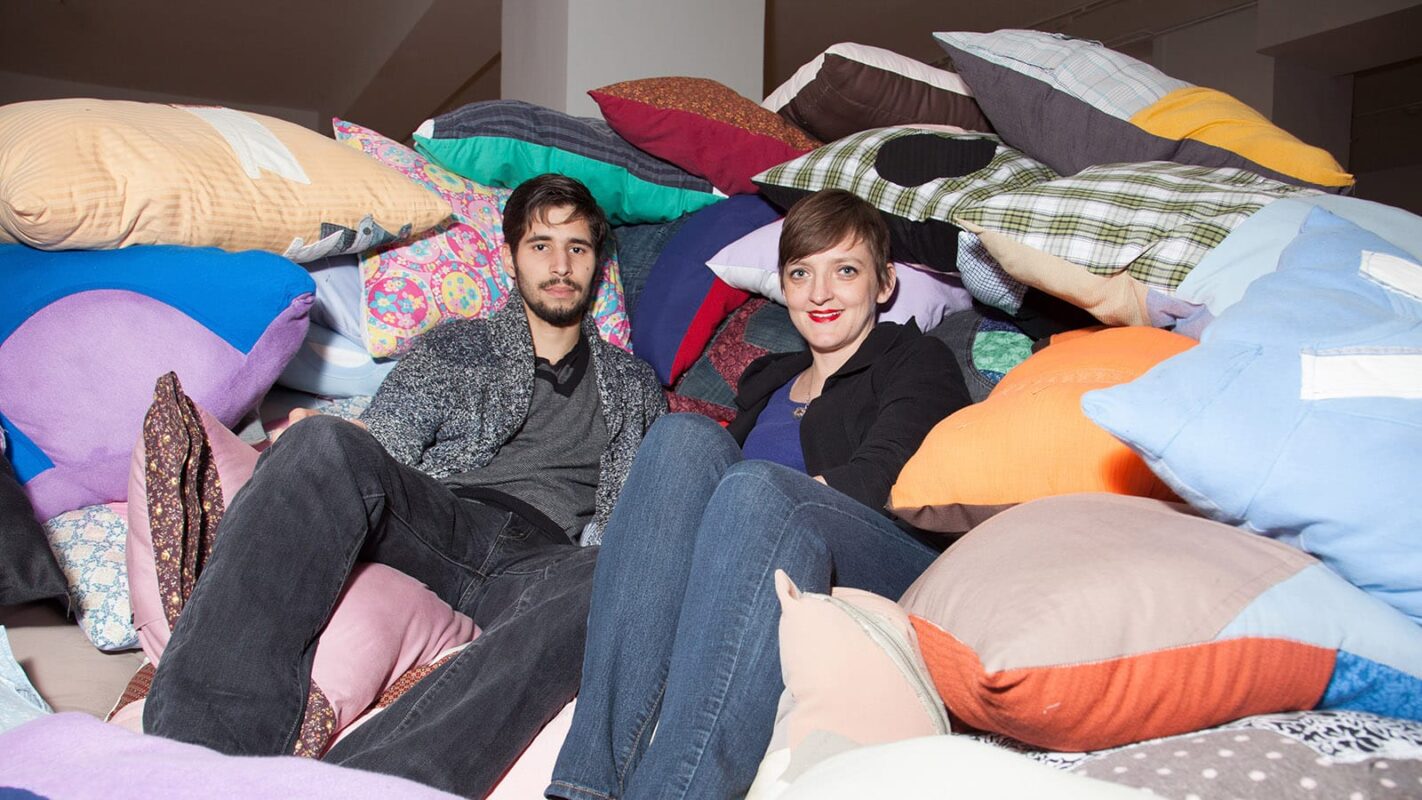Human rights were not the first thing I thought of when I saw the pile of pillows. At first glance, the pile of pillows made out of cut-up clothing littering a floor in Chicago's Cultural Center, I thought of it as a fun quirky art project. I even made my friend jump in the middle of it and be all silly and goofy. But after talking with the artist duo behind the project, I realized it was much more in-depth and dynamic. The pillows are meant to draw attention to human rights. Cuban artist Alejandro Figueredo Díaz-Perera and American artist and gallery curator Cara Megan Lewis created this an ongoing project called 34,000 Pillows.
A law in America, created in 2007 and enforced by the Immigration and Customs Enforcement (ICE) that requires the U.S. government to maintain a minimum of 34,000 beds for detained individuals in their over 250 facilities. The mandate is also known as "the Bed Quota".
What is more beguiling is that the detention centers are funded by the government but privately owned. So for profitability purposes, it's in the owners' best interests to keep every bed filled and to try and add more bodies. Unbeknownst to millions of Americans, every year $1.44 billion of their tax dollars go to pay for these detention centers.
To the artists, this bed quota is a human rights issue. The world of detention centers deny many people human rights, liberties that sometimes there have been reported deaths. The pillow is a symbol of the individual person. It has a sense of body, of being corporeal. The pillow has a physical mass but also a sentimental connection. The pillow becomes a hybrid of a human form and a form of comfort. The artists added the element of clothing to the fabrication of the pillows to make a direct connection with the person who had once worn the clothing.
Díaz-Perera and Lewis wanted the pillows to humanize the bed quota and have them represent each detainee. The pillows, made from used clothing, appear to be bodies that has no head and no limbs. When the pillows are lined up for their exhibition, the soft monolithic shapes evoke imagery of tombstones or, when all piled on the floor, like a mass grave.
To get this project started, the artists enlisted the help of the Interfaith Committee for Detained Immigrants (IDDI), an organization that provides assistance to former detainees in Chicago. When detainees are released they give them shelter and help them to find jobs and live independently.
For the first installment, Díaz-Perera and Lewis received clothing from former detainees that were connected with the IDDI. They made it an interactive process and invited participants to come and make a pillow. The space to produce the project and reach out to people was part of a residency at the Chicago Cultural Center.
Thus, the 34,000 Pillows project was born. So far the artists have only scratched the surface with 600 pillows made in Chicago and a few hundred more made in San Francisco. They hope to find more spaces to continue this project. They wanted to even explore the possibilities of getting rid of all those beds. It can seem like an impossible project and it is ongoing. Each pillow is for sale and the price is $159. That is the equivalent cost of the daily maintenance of each bed in a detention center. Pillows from their exhibitions can be purchased here. 100% of the proceeds of the sale of the pillows goes towards supporting the efforts of national and local immigration organizations whose efforts are dedicated to revealing the injustices of the detention centers and to restoring human dignity to those formerly detained. The installation embodies the human experience in a bold and compelling way that mandates, quotas and statistics cannot.
Find out more about Alejandro Figueredo Díaz-Perera & Cara Megan Lewis.
Article and photos by Becky Yee taken at Chicago Cultural Center.
3400 pillows / Alejandro Figueredo Díaz-Perera / American Artist / around digital media / art collaboration / art project / Becky Yee / Cara Megan Lewis / chicago cultural center / cuban artist / dentention centers / detainees / gallery curator / human rights issues in america / humanity / inspiration / Interfaith Committee for Detained Immigrants

